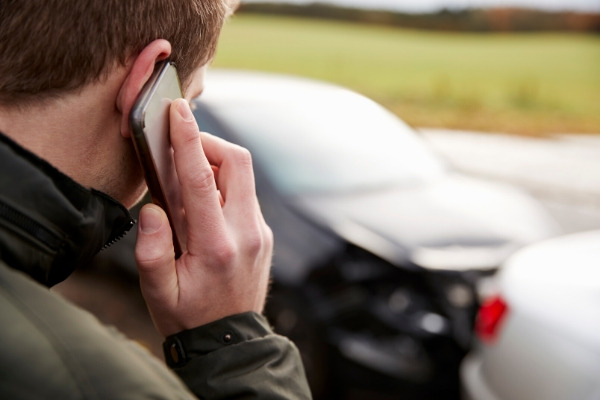The type of coverage that can be termed as third party is also called as liability coverage, where one includes himself against becoming a legal defender in case of a vehicle accident that he has caused damage and injury to someone else along with their property. This is usually a standard coverage offered with majority of auto insurance policies.
But, this coverage has its own disadvantages and advantages even though it is most sought coverage you’ll find in vehicle insurance policies.
Coverage for Liability
The purpose of a third party liability coverage car insurance is to cover the loss or damage caused in an accident where the insured is at fault, and where the policy limits have been exhausted and in effect, making it ideal in a fault based insurance state. This type of insurance is very useful when medical expenses and damage to property from an accident needs to be claimed from separate policies of both drivers.
The law in most states requires that you purchase some federal identification of liability insurance which is often initiated as a third party coverage which is before mentioned. This is offered by some auto policies as standard while others allow you to purchase this additional coverage.
A third party liability coverage include two primary facets: bodily injury and property damage coverages. While BIP is self-explanatory – it covers the medical expenses of other drivers and passengers involved in an accident that you caused, this could further include reimbursement of lost income, physical suffering compensations, and even hire fees, car rental reimbursement if such costs were incurred. However, PDL may include covered items such as laptops and even mobile phones found in the vehicle while PDL is the cost incurred in repairing the laptop assuming it was damaged during the collision.
Property Damage Coverage
The coverage which is meant to protect one from claims made by a third party for negligence is important in an auto policy and should be noted since it covers the costs that would have gone to the repair of a vehicle or even a damage caused and all round resources as well as legal suits. It is also called bodily injury liability coverage, and it is probably one of the more popular forms of liability insurance taken as it is usually offered as part of the collision and comprehensive coverage policies.
Accidental insurance coverage under your plan is quite broad in that it encompasses a variety of items such as medical costs, income losses, vehicle rentals and travel costs as well as your funeral expenses if you passed away as a result of the accident. Despite the fact that it isn’t a legal requirement, in many states there are auto policies that have accident insurance coverage so it is mandatory for drivers to have at least that provision within their policy.
Insurance for damage to one’s own property excludes protection against suits made by one of the insured persons against himself. So, it functions as a type of insurance coverage specifically for policyholders against the situation where they actually caused an accident. Therefore, it is important for the insured persons to differentiate clearly between first-party and third-party claims; in addition, it is incredibly beneficial to have property coverage because it provides mental peace and safety and can be used to deal with unforeseen trouble efficiently.
Full Insurance
Liability insurance is sometimes referred to as third party coverage, which is liability insurance that deals with any costs associated with injuries or damage caused to another properties as a result of an accident that you were responsible for. This base form of insurance coverage is required by most states for a minimum for each driver, many other providers include a small percentage when a policy is issued, however never use this coverage as a substitute for collision or extensive coverage.
If another person’s car collides with your trunk, claiming through a third-party insurance is probably the only option available to you to defray the cost of repairs. In this case, your insurance provider inspects the damages, makes a certain assessment on how much it will cost for certain repairs, then issues you a settlement which is the dollar value of the repairs (less any deductibles or a loan payment if any were made). If they, however, write it off as a total loss, you are reimbursed the value of the loan you repaid the due amount to the bank or out to lenders.
The cost of the vehicle, the place in which you reside and the extent of coverage you want are some of the factors that help you decide on third-party auto insurance. It may be true that third-party insurance is more expensive to get as compared to other types, but considering that accidents could happen and as such, having third-party insurance might be helpful in alleviating the burden that could arise from a medical bill or property damages. It is all the more important if you happen to be in a state in which the fault lies with you or are concerned with the possibility of having to pay for future medical bills or property damages during disputes.
Uninsured Motorist Coverage
Third-party car insurance provides coverage against damage done to another person’s vehicle or personal property while sidelined by an accident which was not caused by you. Act only, liability, or “act only,” third-party coverage is required in most states, and in most cases includes general injury and property loss insurance as well.
A liability claim is a third-party claim that includes such expenses as medical bills, costs associated with repairing property damage, and costs incurred while hiring a rental vehicle. Certain jurisdictions require at least some form of third-party liability to be taken up by the motorists.
In the United States, third-party insurance is which specifically targets insurance claims made against individuals who are policyholders. For example, Uninsured motorist coverage (UMC) can cover costs that may arise out of an accident with an uninsured driver and can as well cover damage to your car incurred in an accident which never involved a lead collision in the first place. Furthermore, UMC can help where at-fault drivers have inadequate automobile insurance coverage in comparison to the collisionownmeant with substantial policies that the owner holds and can grant reimbursement where significant collision and property damage destruction policies did not cover the damage expense.
Third party car insurance has its advantages, but it has some major disadvantages too. While many may see the lower premium payments for this type of policy as an advantage, this can become frustrating in an accident where no blame can be assigned to you and your personal vehicle is damaged; one major downside is that third party coverage only covers the claims for damages or injuries to other people, their property or their vehicle, but not your own. As a result, many instead turn to full comprehensive or collision policies.




